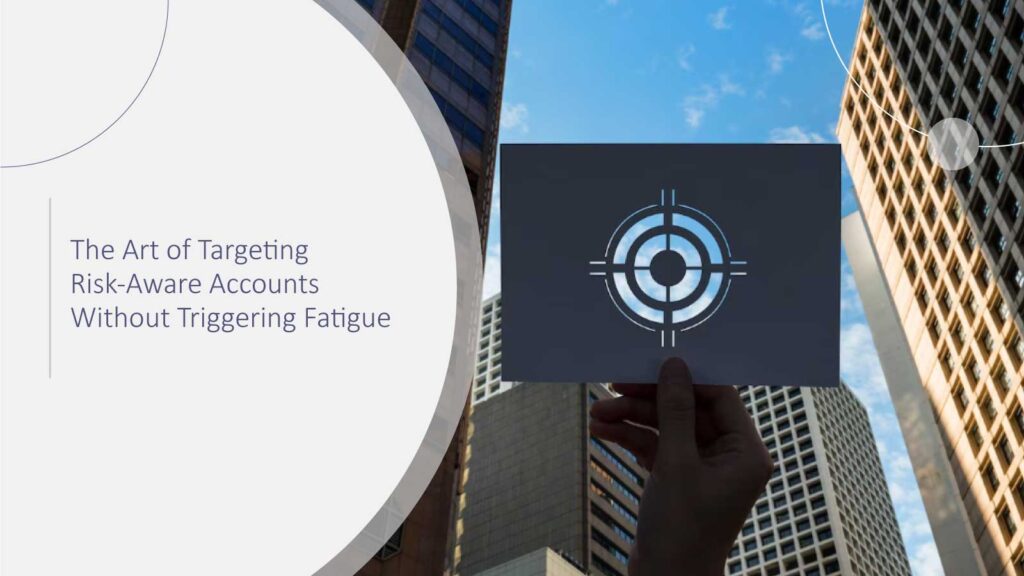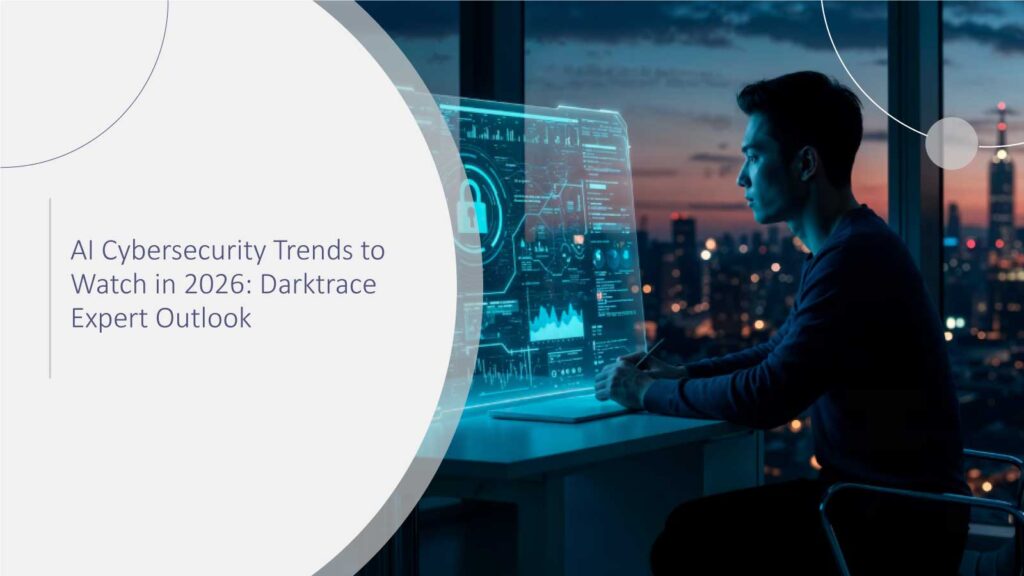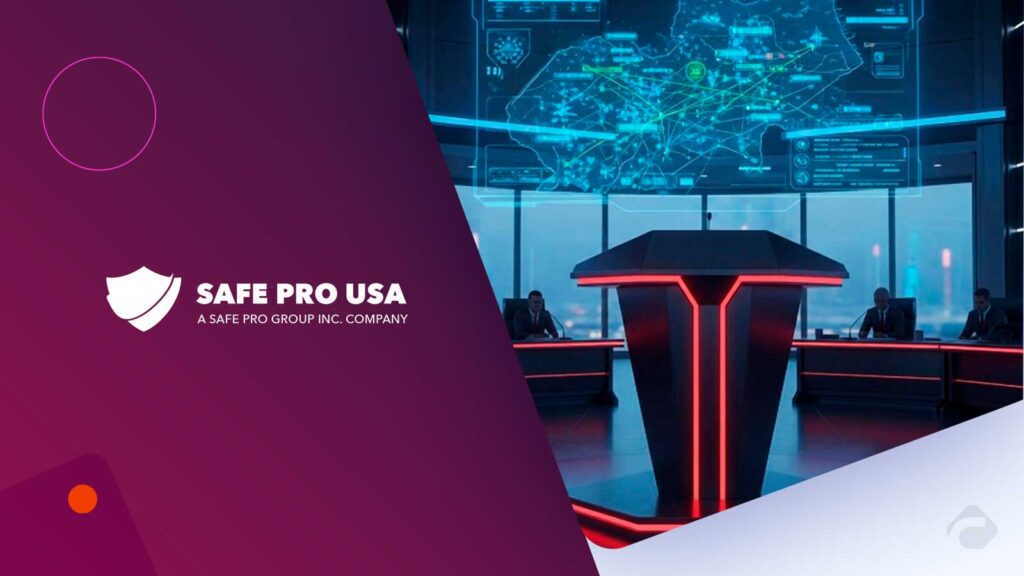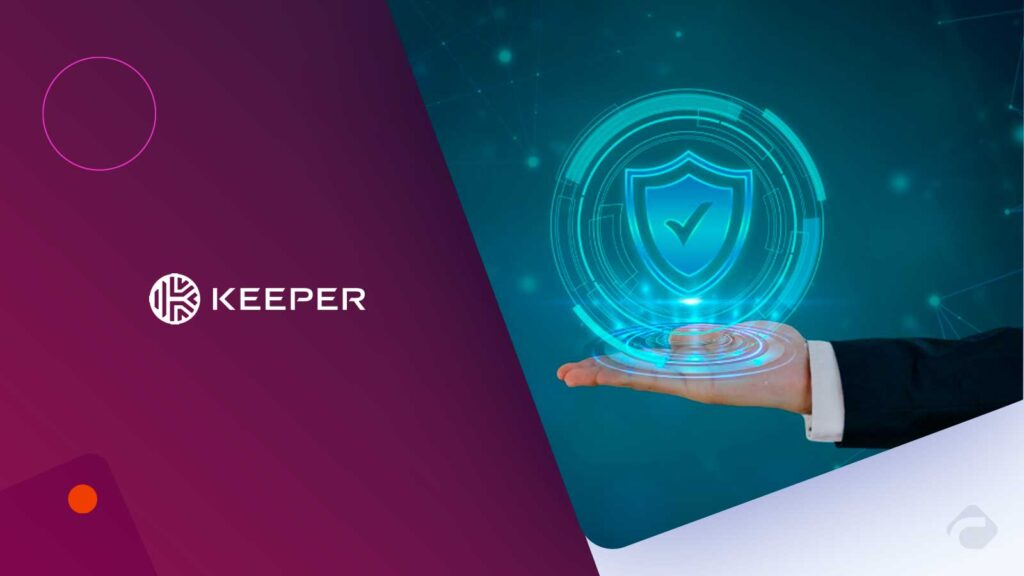In cybersecurity, time is a luxury most security leaders cannot afford, and trust is currency. Even the optimal solution may not stick if the message comes too late. Also, in the wrong tone, or is caught up in the din of too much vendor noise. Organizations striving for effective cybersecurity must learn to identify and engage Risk-Aware Accounts without overwhelming them. Eventually, balancing tailored protection with trust and minimal alert fatigue.
The bitter reality is that today’s security-conscious businesses realize security is a non-negotiable. They realize threats change day by day, and budgets need to catch up. What they despise is another salesperson who muddles pushy persistence with value-add. This article breaks down why engaging Risk-Aware accounts requires a few things. These may include an artful stroke, combining data, empathy, and crisp execution to engage without tiring already tired ears.
Why Security Fatigue is a Silent Threat to Engagement
Recent research points to a paradox. While world security expenditures reach new heights, Gartner predicts $215 billion in global security and risk management expenditures in 2024 (Gartner Forecast), security leaders are exhibiting signs of disengagement from the same conversations that influence their buying habits.
According to a National Institute of Standards and Technology (NIST) study, more than half of security professionals habitually dismiss vendor alerts and marketing messages owing to mental exhaustion and overburdening. Security fatigue is the result of an inundation of messages, compliance notifications, and consecutive threat updates that never amount to useful intelligence.
But that exhaustion does not signal that these leaders disrespect security. To the contrary, it’s a sign of the need to accomplish more with fewer people, defend budget lines to boards of directors, and demonstrate a quantifiable ROI for every dollar that goes toward cyber risk management.
Understanding the Mindset of Risk-Aware Buyers
Risk-Aware accounts don’t view cybersecurity as a checkbox task; for them, it’s a board-level concern directly aligned with operational resilience and brand trust. They want a partner who fully comprehends the subtleties of compliance, changing threat vectors, and the internal politics dictating budget cycles. To fully earn their confidence, vendors must bring outreach and value propositions into alignment with three fundamental pillars: contextual comprehension, measurable impact, and operational alignment.
Deep Contextual Understanding
Seasoned CISOs and data protection professionals anticipate a vendor to be aware not only of their industry but also of the regulatory systems and risk types applicable to their business model. A pitch that neglects special audit needs, local privacy regulations, or prior security investments shows laziness and usually gets the trash button pressed on it. Showing contextual understanding builds trust faster than a slick demo can. It demonstrates that the vendor has taken the time to learn what makes this target organization’s risk environment unique. Because of this, the dialogue transitions from a cold call to a more strategic discussion based on the fact of customer’s day-to-day security struggles.
Quantifiable Risk Reduction
Security expenditures in today’s economic environment need to be justified in hard dollars. Risk-aware buyers must have a tangible demonstration that an answer minimizes the probability or severity of a breach in quantifiable terms. It no longer holds true to declare a tool “enhances security posture.” Decision-makers require proof points, like a percentage decrease in response times for incidents or a documented reduction in false positives. Adding tangible ROI quantification generates internal support, particularly when security executives have to justify budget increases to CFOs or boards. Suppliers who can support assertions with outside studies or solid case references have a competitive advantage over those basing sales on hype.
Operational Fit and Minimal Friction
Regardless of how powerful a security solution seems, Risk-Aware organizations hold back if deployment will introduce complexity or interfere with key processes. Security teams already have multiple consoles, logs, and compliance tasks to manage daily. Adding another layer should make it easier, not harder, for them. Successful vendors point to readiness for integration, integration with current security frameworks, and low learning curves for technical staff. This is an indicator that the company cares about assisting customers to get better security without exhausting their already over-extended staff.
Respect for Internal Governance
Yet another subtlety frequently overlooked by novice sales teams is mature security buyers’ internal governance culture. Few high-stakes decisions are made by single individuals; Risk-Aware accounts usually have committees with security operations, compliance, legal, and finance stakeholders. Each constituency will have distinct concerns, ranging from legal exposure to cost management and regulatory audit risk. Sellers who develop messaging and materials for multiple constituencies demonstrate they comprehend the entire buying dynamic. This approach positions the vendor as a trusted advisor who supports consensus, rather than as an aggressive outsider pushing for an unvetted quick sale.
Avoiding the Fear Trap: Messaging that Respects the Buyer’s Expertise
Too many security marketers still lean heavily on fear-based narratives. While highlighting consequences has its place, leading with fear signals a lack of respect for an audience that likely spends each day mitigating these very risks.
In its place, experienced cybersecurity marketing needs to shift away from theatrics and towards facilitation. A study by Forrester indicates that 72% of CISOs would opt for case studies illustrating specific ROI and integration results over the run-of-the-mill threat reports (Forrester Security ROI Report, 2024). What they wish to know is how your solution interlocks into their architecture, what issues it resolves today, and what operational weight it may add tomorrow.
A more effective strategy emphasizes highlighting quantifiable results. For instance, show how your end-point solution lowers false positives by 40%, or the way a cloud compliance tool saves two weeks of audit preparation. This turns the discussion away from fear and toward efficiency, good news for buyers with budgets to defend in board rooms.
Making Use of Intent Data to Time Outreach Appropriately
Even the most timely message is ineffective if it comes at the wrong moment. Intent data, when applied sensibly, fills this gap. Instead of mass campaigns, the best cybersecurity marketers today use behavioral indicators that signal true interest.
Tools such as Bombora and IA monitor which firms are investigating something like ransomware recovery or zero trust architecture. By cross-matching this with prior history, maybe the account just onboarded a new CISO or had a compliance slip-up, vendors can make targeted outreach a priority that’s based on actual pain.
This level of accuracy translates to fewer but higher-value touchpoints. It also shows respect for the prospect’s time, which, as every CISO will tell you, is the most limited resource they protect.
The Role of Thought Leadership in Achieving Credibility
In the intricate ballet of B2B cyber sales, credibility is paramount. Nobody wants to risk the budget on an untested tool, particularly in an industry where reputational harm is a career killer.
A demonstrated approach to establishing trust is thought leadership that informs without overtly selling. Offer insights to prestigious sites, sit on peer panels, and co-write studies with well-known security analysts.
For instance, CrowdStrike’s yearly threat report is highly looked forward to every year because it provides actionable insight, not product promotions. Likewise, Palo Alto Networks hosts public threat intelligence sessions that draw security teams and influencers in.
Forthright publication of in-depth analysis or support for community-moderated forums turns vendors into respected industry partners instead of obtrusive sales mills. Multi-Channel, Low-Friction Engagement Is Most Effective
Risk-Aware accounts don’t typically convert on the first touch. Rather, they progress through a series: problem awareness, solution identification, justification within, proof-of-concept experiments, and ultimately, procurement.
Every phase requires a different style of communication. Early on, a whitepaper or podcast would do. Halfway, live demonstrations and ROI calculators are more compelling. Towards the end, customers want to see clear contract terms, integration assistance, and references from peer companies in the same industries.
It is here that security marketing falters: they continue to bombard the same message without varying content and tone to suit the buyer’s progression. High-performing teams choreograph webinars, quick clips, industry roundtables, and tailored executive briefings, all aligned to the buyer’s changing needs.
Balancing Automation with a Human Touch
Contemporary ABM tools automate outreach at scale, but Risk-Aware buyers can sniff automation a mile away. Generic sequences and templates sound impersonal, and that destroys trust.
Humanize your game. Personalize emails with mentions of the target’s public statements or recent efforts. Refer to compliance events or data breaches that pertain to their industry. Where possible, have a veteran security consultant, not merely an SDR, drive the conversation when technical inquiries are involved.
I once had a CISO inform me bluntly: “If your rep can’t answer basic questions about our threat landscape, I will stop responding.” Genuinely honest conversations trump rehearsed presentations hands down.
Honoring the Buying Committee’s Dynamics
Cybersecurity buying decisions typically don’t fall to a single individual. Even when the CISO is an advocate for a tool, procurement specialists, compliance officers, IT architects, and CFOs have a say. A report by Deloitte indicates that a typical enterprise security transaction has 7 to 10 stakeholders (Deloitte, 2024).
Any approach to influence Risk-Aware accounts thus needs to cater to the unique interests of multiple decision-makers within the organization. For CIOs, the message should emphasize how the solution maximizes system uptime and overall performance in line with their mandate to provide continuity of operations. Compliance officers, by contrast, require clear proof of how the product facilitates audit readiness and eases regulatory reporting. CFOs, meanwhile, demand transparency on cost structures, long-term predictability, and risks of vendor lock-in. Writing targeted, concise messages to each persona, always with measurable business results in mind, is critical to establishing credibility and achieving consensus within the buying committee.
Measuring Success Beyond Clicks and Opens
Last, reaching Risk-Aware accounts demands a rethink of performance metrics. Traditional KPIs such as email opens or webinar registrations are insignificant if they don’t lead to greater engagement.
Astute security marketers closely monitor how involved prospects are beyond the first click and opens. They track the depth and quality of conversations with technical teams, measure the duration that visitors spend reading in-depth technical validation content, and mark repeat attendance in invitation-only, closed-door briefings. They also look for indications that more stakeholders are participating as the relationship progresses. By prioritizing these qualitative engagement signals rather than shallow lead metrics, they set themselves up to cultivate accounts that not only convert with greater surety but also renew at higher value in the long term.
Conclusion: Engagement Over Aggression
Ultimately, the skill in targeting Risk-Aware accounts is restraint, relevance, and relationship-building. It requires an ethic of respect for an audience that battles wars on the frontlines of data protection every day.
Push too hard and you become part of the noise they want to tune out. Engage thoughtfully, show them credible value, and you get not only a contract, but trust, the scarcest asset in cybersecurity.
As 2025 drives the growth of AI-powered security and zero trust models, the leaders will be those who simplify security leaders’ jobs, not complicate them. Less fear. More facts. Less noise. More signal. That is the recipe for long-term success.
FAQs
1. How do I stop fatiguing my CISO targets?
Keep it relevant and timed right. Use intent signals, personalize every message, and focus on solving real problems instead of spamming them with generic fear-based pitches.
2. What content works best for risk-aware accounts?
Practical proof: case studies, ROI data, integration how-tos, anything that shows exactly how you reduce risk without adding work.
3. How do I use intent data properly?
Don’t just collect it, act on it. Reach out when they show real interest, not before. Match your message to what they’re researching now.
4. How do I handle big buying committees?
Know who’s involved. Give the CISO technical proof, give the CFO cost clarity, and give compliance leaders audit help. One-size-fits-all won’t work.
5. What should I track to see if this approach works?
Go beyond clicks, watch for deeper demos, repeat meetings, more stakeholders joining calls, and longer engagement with technical content.
To participate in upcoming interviews, please reach out to our CyberTech Media Room at sudipto@intentamplify.com.







